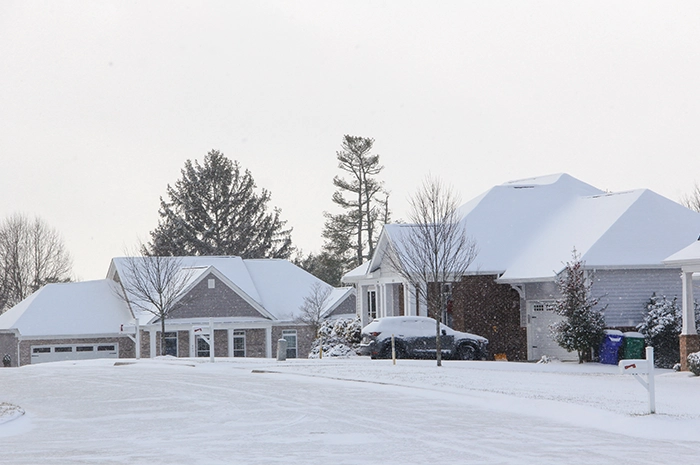If you are planning on working with Dutch firms in the construction sector, or run a construction business in the Netherlands, it is important to know the current Dutch construction industry trends.
We’ll cover the construction industry overview, growth, new construction trends, and challenges faced in the sector in the Netherlands.
Table of Contents:
Dutch Construction Industry Overview
Before the Covid-19 pandemic hit, the Dutch construction industry had been growing at a fast pace.
According to Business Wire, after an annual growth of 4.6% in 2019, the construction industry contracted by 0.8% in 2020, and output value decreased from 124.3 billion USD to 123.3 billion USD. In 2021, there was a rebound, mainly driven by civil engineering and residential construction.
The price of building materials grew from November 2020 to April 2021. This was because of shortages and supply chain disruptions due to the pandemic coupled with a growing demand for building materials. Subsequently, there were many delays and unforeseen increases in cost.
Note that one of the key economic drivers of the Dutch construction sector is the export of structures or parts of structures, as well as prefabricated metal buildings.
Among the top construction exports, in 2020, towers and lattice masts made of steel or iron replaced pallets, box pallets, and other wooden load boards. The same year, the Netherlands exported 2.8 billion euros worldwide, an increase of 37.4% from 2014.
Primary Sectors of the Dutch Construction Market
- Commercial construction
- Infrastructure construction
- Energy and utilities construction
- Industrial construction
- Residential construction
- Institutional construction
Current Construction Industry Trends
What construction industry trends can we expect in the coming years for the Netherlands? Here are a few.
1. Transport, Energy, & Utilities Growth Due to Government Support
The construction sector in the Netherlands is expected to grow between 2021 and 2026 thanks to increased state support from the government under the National Growth Fund.
Under this, the government will invest in the development and maintenance of transport infrastructure, utility projects, energy projects, and residential projects. The first round of funding will include 4 billion euros (4.6 billion USD) for ten projects in railway, green hydrogen, and education sectors.
Furthermore, to meet the EU’s goal of cutting carbon emissions by 55% by 2030 compared to the levels in 1990, the government intends to develop 10.7GW of offshore wind capacity.
2. Housing Demand Will Remain High
Housing demand is expected to remain high in the coming years.
This will contribute to expansion in the residential buildings sector, which has already been supported by the government scheme Woningbouwimpuls (“residential building impulse”). The scheme provides funds to housing projects that might otherwise face financing constraints.
Having said that, non-residential construction recovery is expected to remain tepid as of now. This is due to a lack of demand for commercial construction.
Recommended Reading:
3. Continuation of High BIM Usage
The Netherlands is at the forefront of Building Information Modelling (BIM) implementation in construction. Adoption of BIM is high compared to other European nations – 80% of Dutch architects use it.
This is largely due to digitization of the construction market and cooperation between stakeholders including builders, advisors, electrical installation companies and contractors.
The Dutch Building Information Council (BIR) is the main actor regarding BIM implementation. It is active in the implementation, promotion, and development of open BIM standards, which increases coordination between parties and fosters healthy competition in the industry.
To further stimulate open BIM use, the Netherlands has developed a BIM Gateway (BIM Loket), which is intended to be a portal for managing and sharing information about open BIM standards. The government is also promoting the adoption of BIM via professional courses.
Barriers to Construction Industry Growth
In addition to the shortage of skilled workers, there are a few challenges in the Dutch construction industry.
1. Environmental Issues
Construction in the Netherlands is impacted by various environmental issues, such as nitrogen reduction, as well as stricter rules about per- and polyfluoroalkyl substances (PFAS).
This is not new – it resulted in many postponement of building permits and construction project delays even before the Covid-19 pandemic.
2. Mature Market
The construction market in the Netherlands is mature and characterized by price-driven competition and low entry barriers.
Profit margins have been low for several years at about 3%. It is expected that higher wages and increasing prices for construction materials will have a negative effect on profit margins within the year.
3. Shortage of Building Materials
There is currently a shortage of building materials, which has led to further project delays. Builders are anxious about being unable to pass higher construction material prices on to clients, and the reluctance to build affects tenders.
Recommended Reading:
4. Late Payments
The pandemic has exacerbated the problem of late payments. According to the European Construction Sector Observatory, in 2020, they affected 47% of the value of B2B invoices in the construction industry, against 35% in 2019. On average, 42% of enterprises had to wait up to 14 days past the due date to turn invoices into cash.
5. Access to Finance
According to the 2020 Survey on the Access to Finance of Enterprises (SAFE), access to finance remains the largest concern for 7.1% of Dutch SMEs, which is below the EU average of 9.9%.
Furthermore, the report shows that bank loans are still the primary source of financing for 42.2% of Dutch SMEs. The construction industry’s high dependence on bank financing and banks’ reluctance to provide credit mean that access to finance continues to be an obstacle.
Having said that, since the construction industry is looking more optimistic overall, banks may change their attitudes regarding providing finances.
Even with challenges, the construction industry growth in the Netherlands looks optimistic, thanks to turnover, employment, and government targets. Further business opportunities can also be expected in the sector.
We hope this article has given you an insight into construction industry trends in the Netherlands. Is there a prominent building trend that we missed? Let us know in the comments!
If you are planning on a construction project in the Netherlands, BluEntCAD provides high-quality CAD services. We serve real estate agents, real estate brokers, apartment rental agencies, architects, facility management companies, leasing companies, and telecom/wireless data companies.
To see how we’ve helped companies like yours with CAD conversion services or CAD drafting services, browse our portfolio.
Ready to use CAD services for safer, greener, and more accessible buildings? Contact us now!
Maximum Value. Achieved.







 The Features Buyers Want in London Properties
The Features Buyers Want in London Properties  Building Design for Extreme Cold: The Architecture of Climate Change
Building Design for Extreme Cold: The Architecture of Climate Change  Contractor vs Subcontractor vs Builder: What’s the Difference?
Contractor vs Subcontractor vs Builder: What’s the Difference?  Mansion vs McMansion: Is There Really a Difference?
Mansion vs McMansion: Is There Really a Difference?